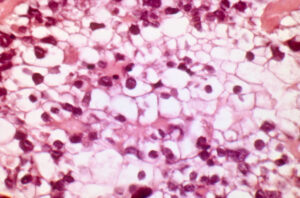
In a 2010 study of ovarian clear cell carcinoma , Jones and colleagues report a discovery of a gene that is mutated in high frequency and is involved in epigenetic regulation of gene expression.
Continue reading “Ovarian Clear Cell Carcinoma: Frequently Occuring Mutations”
